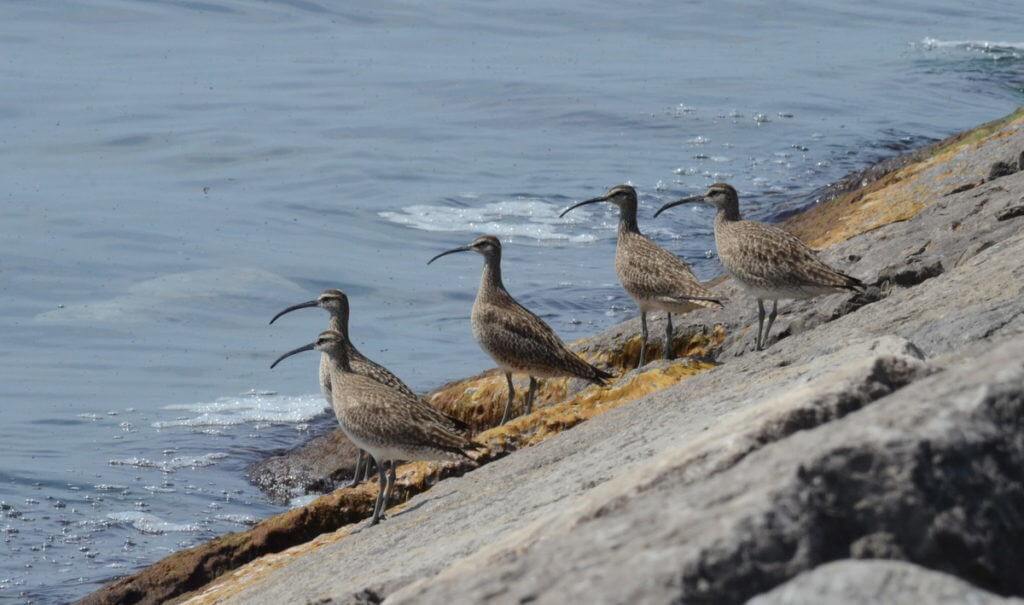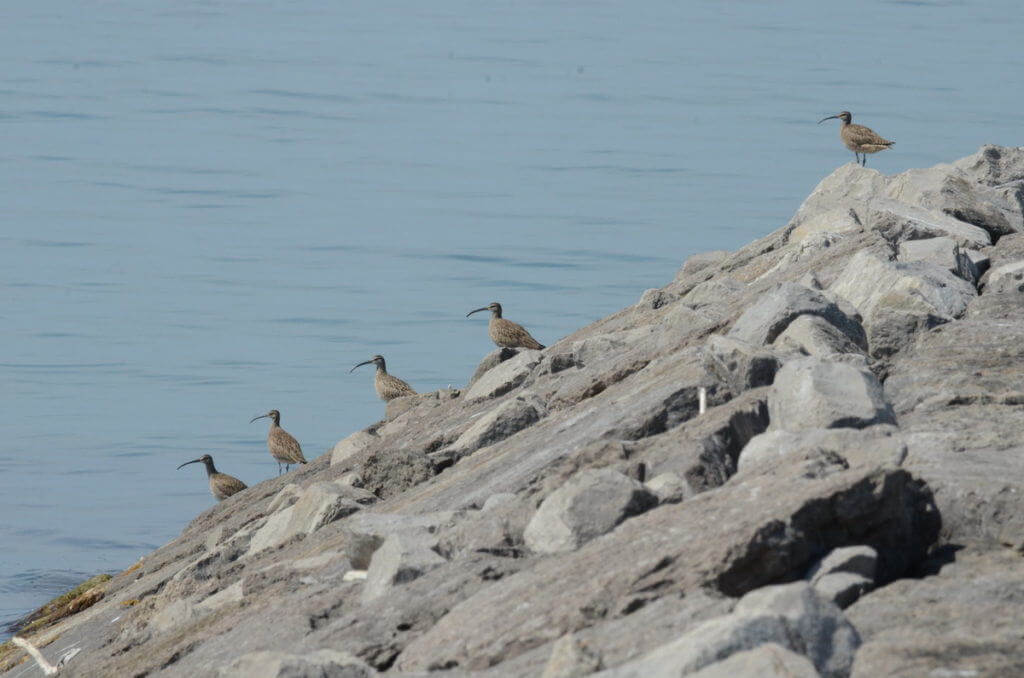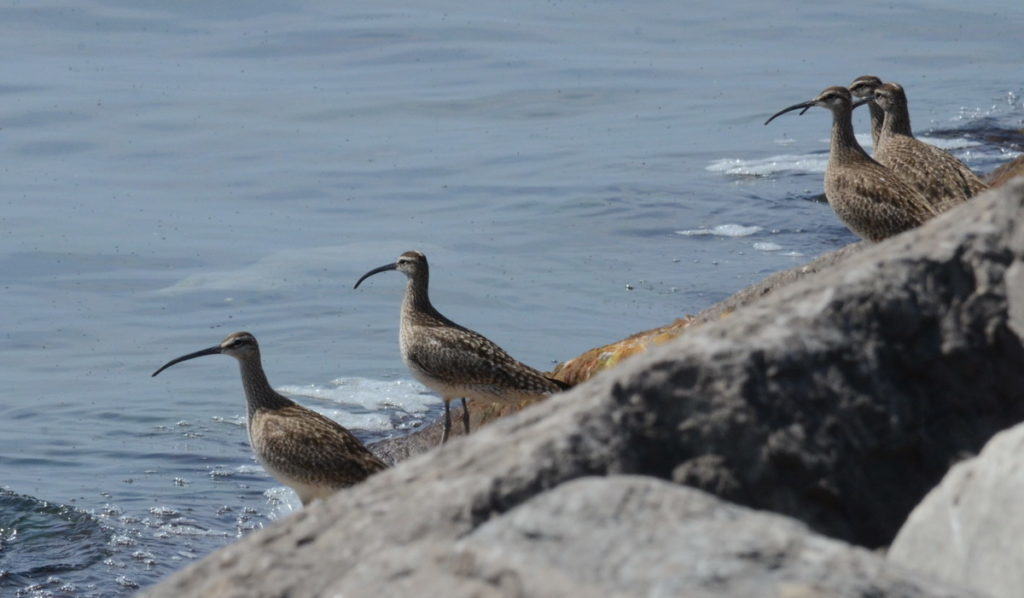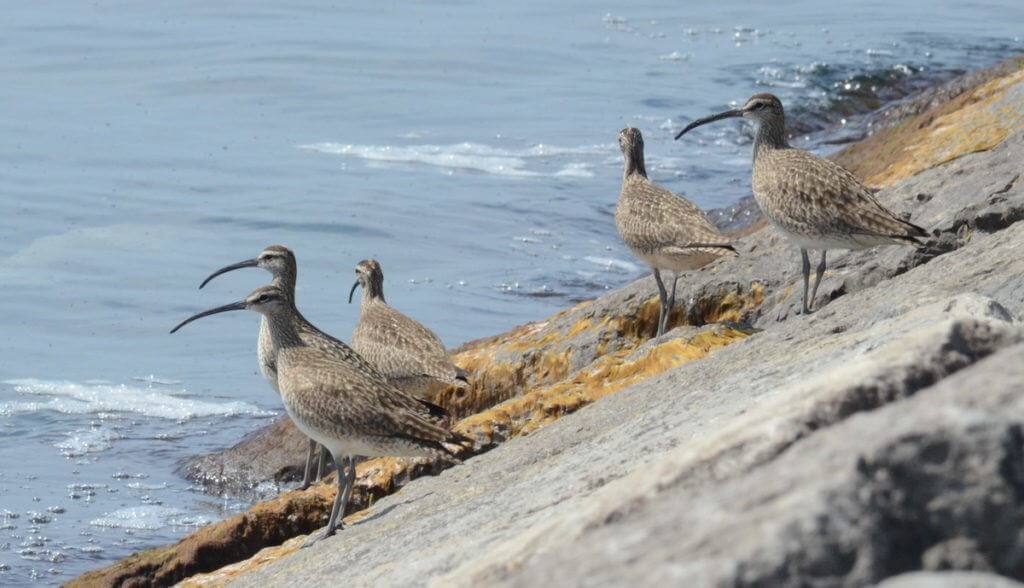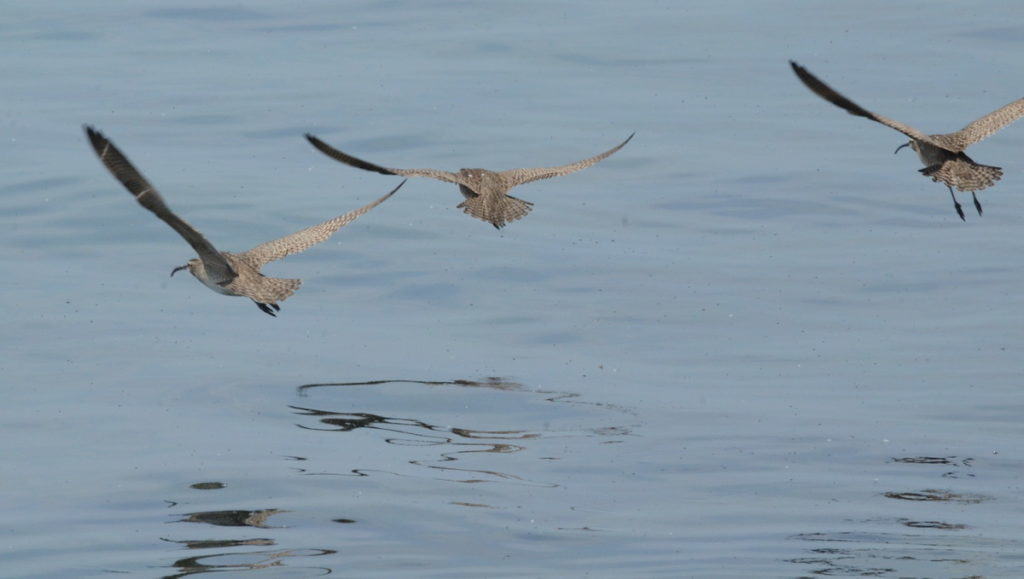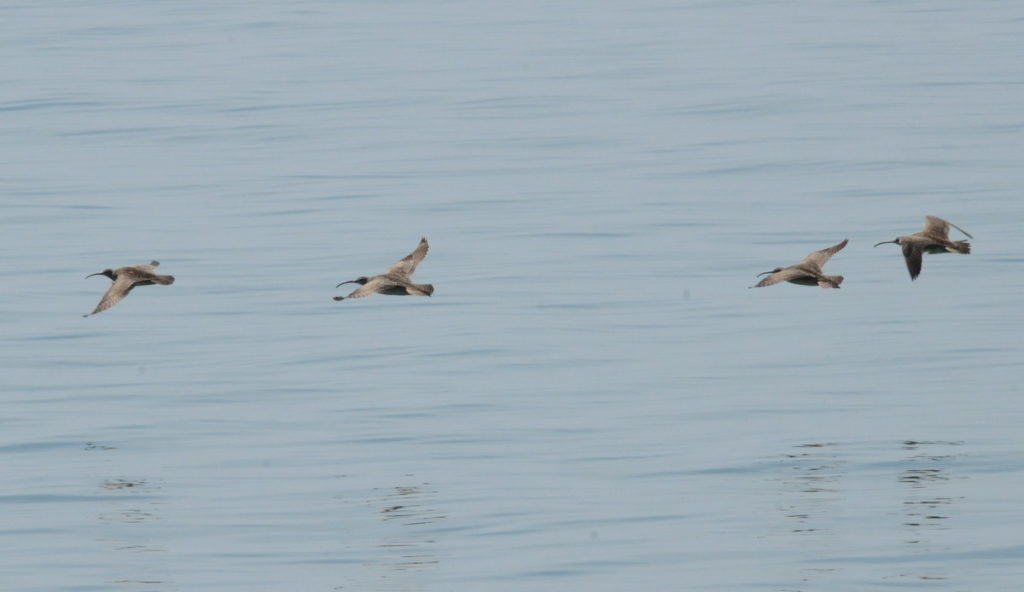Whimbrels Along Lake Ontario Shoreline
It was late spring and because of the warm temperature, we opted to bike from Scarborough to the Lake Ontario shoreline in Ontario, Canada. At the first rocky breakwater east of Highland Creek Trail, we spotted 5 whimbrels grouped on some large flat slabs of concrete.
When we caught a glimpse of the telltale profile of one of these shorebirds against the blue water of the lake, we couldn’t believe our luck. It warranted further investigation.
Initially, we thought only one whimbrel was resting on the rocks, one that had gotten separated from the flocks migrating north, but once we crested the breakwater, it delighted us to see 5 whimbrels lined up like ducks in a carnival game.
Like other members of the curlew family, whimbrels exhibit a long, slim, down-turned bill and mottled brown plumage. As you would imagine, the specialized bill is used to probe for invertebrates and insects on the mud flats and sandy beaches that are their preferred habitat. During migration to the Arctic tundra, whimbrels can be found in varied habitats including rocky shores, flooded fields and marshes.
It is interesting to note that this species of wader forms flocks during migration so usually many or only a few stragglers are seen at one time. The reason for the annual Whimbrel Watch at Colonel Samuel Smith Park is because about one-quarter of the total eastern North American population of these migrating birds passes through that area of the Lake Ontario shoreline every year between very specific dates, May 22-27.
A few birdwatchers that we know commented how they have never seen Whimbrels on land but only in flight. The five that we were observing did take to the air flying low over the water to a new location.
Our perspective did not afford views of the Whimbrels’ white backs and rumps that are usually visible when the birds are flying. Once the birds vanished from sight, we hopped back on our bicycles and continued on our merry way.
Frame To Frame – Bob and Jean

